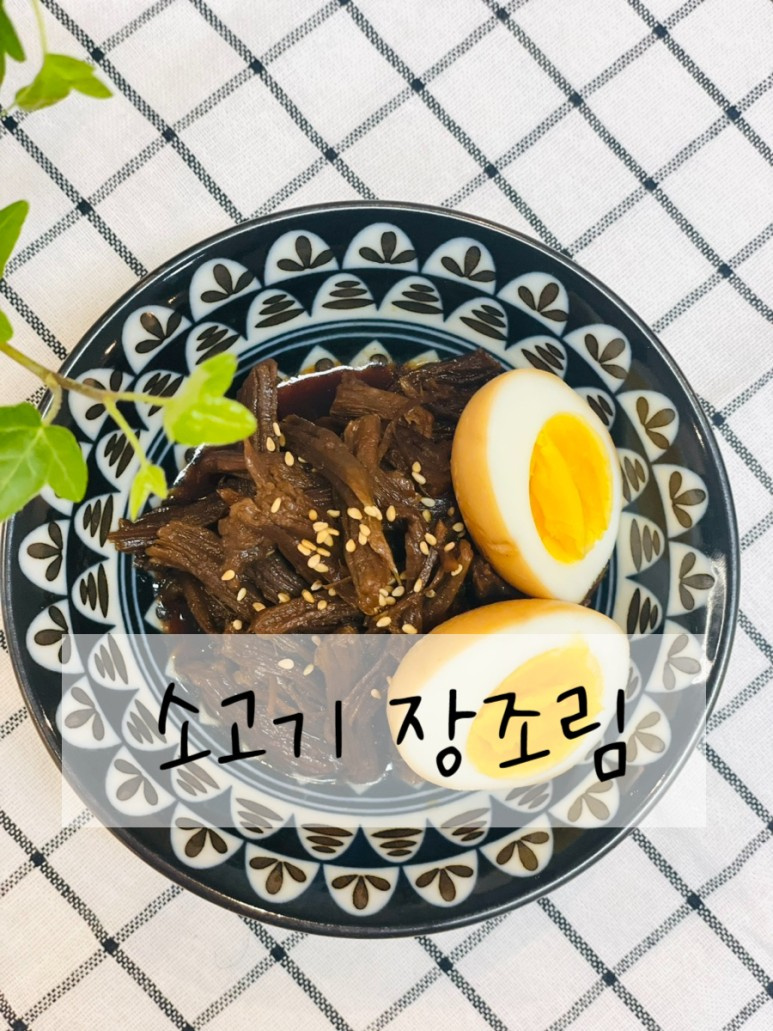Authentic Beef Jangjorim: Bonjuk Style
How to Make Bonjuk-Style Beef Jangjorim – A Delicious Recipe for Tender Braised Beef

Discover the secret to making incredibly tender and flavorful beef jangjorim, inspired by the popular Korean restaurant Bonjuk. This recipe guides you through braising beef in a rich soy sauce base until it’s perfectly tender and infused with savory goodness. It’s an ideal side dish for rice and can be enhanced by adding braised eggs.
Beef Jangjorim Ingredients & Basic Seasoning- 300g beef brisket (or other suitable cut for braising)
- 1/3 cup soy sauce (approx. 60ml)
- 3 tablespoons oligodang (Korean oligosaccharide syrup, approx. 30ml)
Cooking Instructions
Step 1
First, prepare 300g of beef brisket, which is ideal for jangjorim. Place the beef in a pot and cover it with water. Bring to a boil to skim off any impurities or foam that rise to the surface. Discard this initial boiling water. Rinse the beef under running water to remove any remaining impurities. Then, return the beef to the pot, add fresh water to cover it completely, and simmer over medium heat until tender, approximately 30 minutes to 1 hour, depending on the thickness of the meat.

Step 2
Once the beef is tender, remove it from the pot and let it cool slightly. Reserve the cooking liquid. Skim off any excess fat that has risen to the surface of the reserved liquid; this will make the jangjorim less greasy. The cooking liquid is flavorful and will be used for braising.

Step 3
When the beef has cooled enough to handle, it will be easy to shred. You can use forks or your hands to gently pull the meat apart.

Step 4
Following the Bonjuk style, shred the beef into thin, bite-sized strands along the grain. Shredding it thinly allows the soy sauce mixture to penetrate better and makes it more enjoyable to eat.

Step 5
Place the shredded beef back into the pot. It’s best to use the clean cooking liquid you reserved earlier.

Step 6
Pour in 1/3 cup (approximately 60ml) of soy sauce. You can adjust the amount of soy sauce to your preference, but this quantity should provide a good base flavor.

Step 7
Add 3 tablespoons (approximately 30ml) of oligodang (or corn syrup/isomaltose) for sweetness and a glossy finish. This syrup adds both sweetness and a beautiful sheen to the jangjorim.

Step 8
Now, bring the reserved beef and the soy sauce-olive oil mixture to a simmer over medium-low heat. Let it gently braise, allowing the soy sauce to deeply flavor the shredded beef.

Step 9
As the liquid reduces and thickens, the beef will gradually take on a rich, deep brown color. This is the signature hue of Bonjuk-style beef jangjorim, indicating a well-developed savory flavor.

Step 10
Taste the jangjorim periodically as it simmers and adjust the seasoning as needed. If it’s not salty enough, add a bit more soy sauce. If it’s too salty, you can add a little water or more oligodang to balance the flavor. For a moister result, leave more sauce; for a drier, more concentrated flavor, continue to reduce the liquid.

Step 11
For an extra delicious touch, you can add hard-boiled or soft-boiled eggs to the pot during the last 5-10 minutes of simmering. The eggs will absorb the savory soy sauce, making them a delightful addition. (Refer to the link for instructions on how to make perfect soft-boiled eggs.)

Step 12
Congratulations! Your homemade Bonjuk-style beef jangjorim is now complete. Enjoy this incredibly savory and tender side dish that pairs perfectly with rice.

Step 13
Enjoy your delicious finished beef jangjorim! It’s wonderful served as is or mixed into rice.



